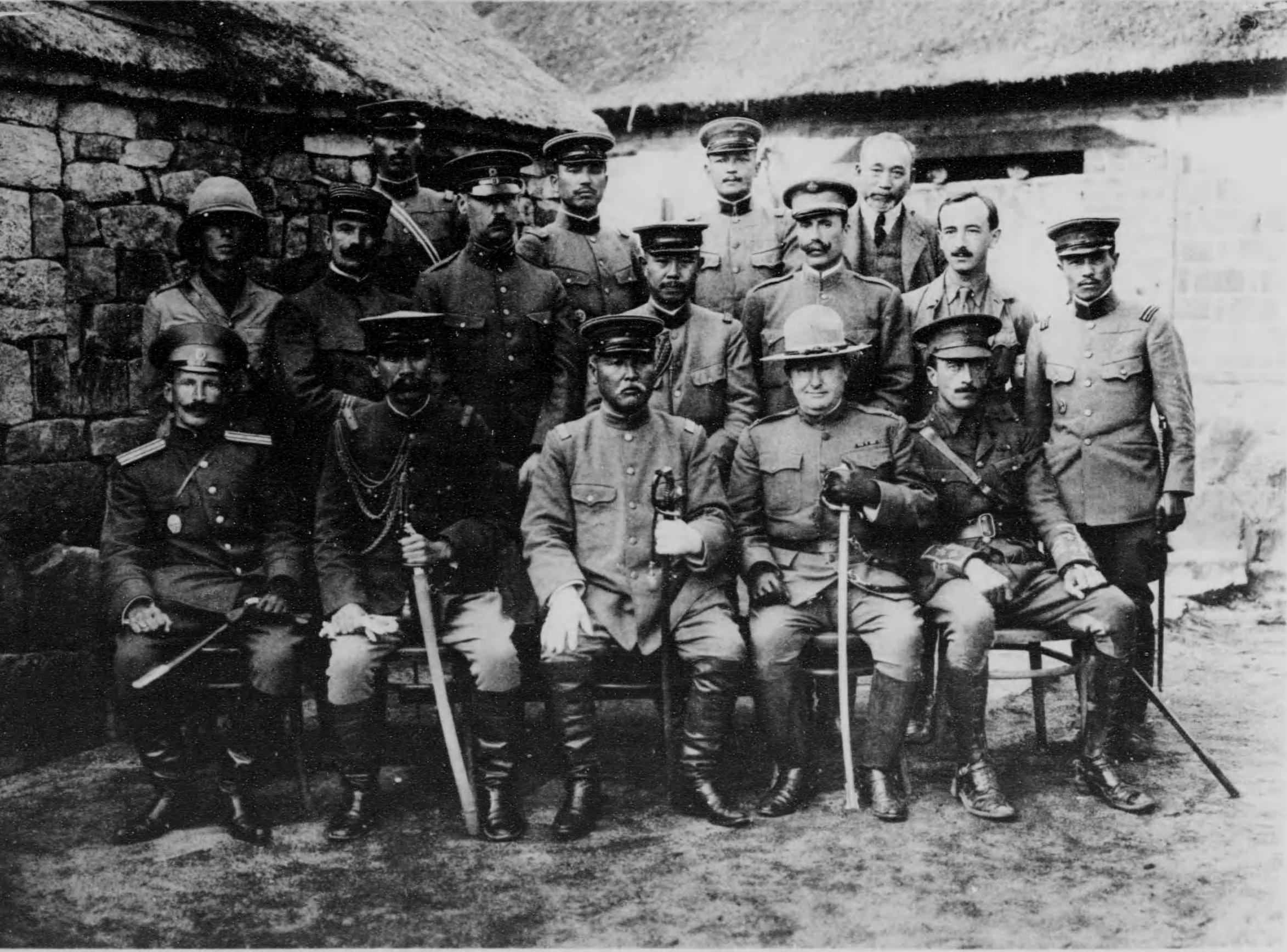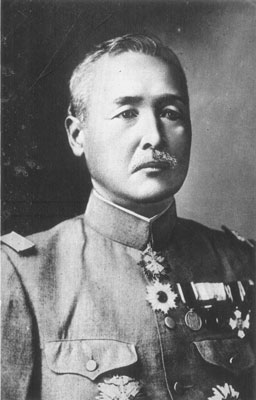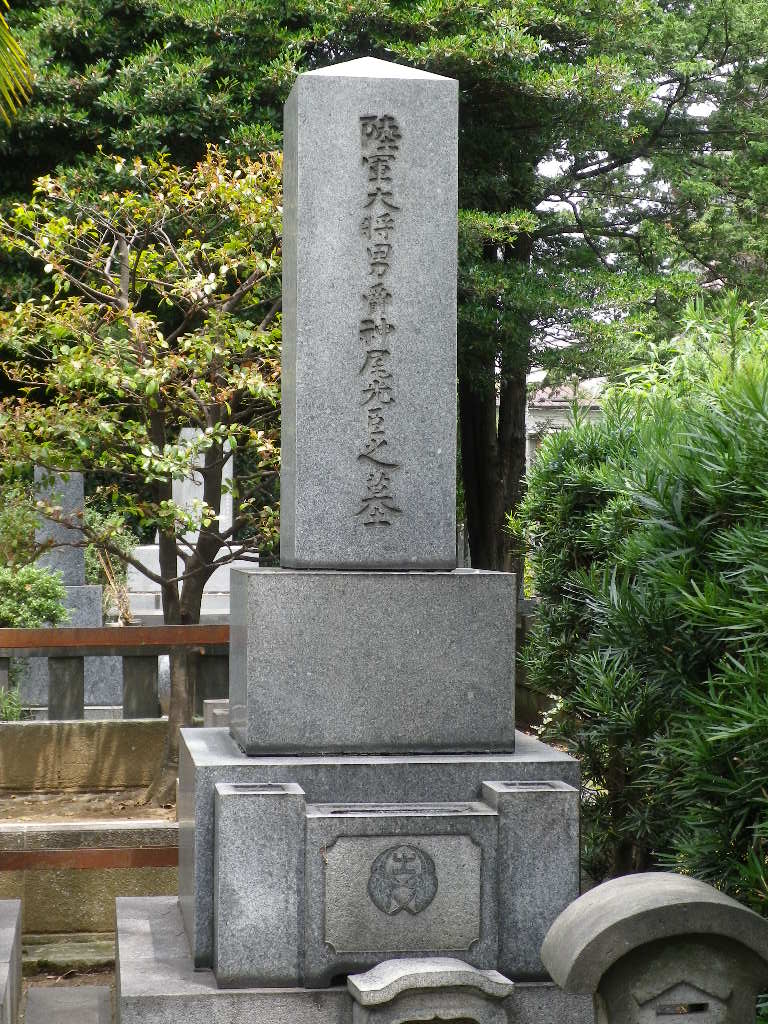1. Life
Kamio Mitsuomi's early life was rooted in a samurai family, leading him to a military education and a rapid ascent through the ranks, marked by participation in significant domestic and international conflicts.
1.1. Birth and Childhood
Kamio Mitsuomi was born on February 27, 1855 (January 11, Ansei 2, by the Japanese calendar) in Okayama Village, Suwa District, Shinano Province (present-day Okaya City, Nagano Prefecture). He was the second son of Kamio Heizaburō, a samurai retainer serving the Suwa clan, a prominent feudal domain during the Edo period.
1.2. Education
Kamio Mitsuomi embarked on his military education in October 1874, when he entered the Army Cadet School. He successfully completed his training in February 1876, upon which he was commissioned as an infantry sergeant in the Imperial Japanese Army.
1.3. Early Career
Kamio Mitsuomi's early military career saw him participate in the Satsuma Rebellion from January 1877, a significant civil war that challenged the new Meiji government. His service during the rebellion earned him rapid promotions: he advanced to sergeant in July 1877, then to ensign candidate in October of the same year. By February 1, 1879, his commission was officially confirmed, and he was promoted to second lieutenant in recognition of his wartime contributions. In April 1882, he was further promoted to lieutenant.
2. Military Career
Kamio Mitsuomi's military career was characterized by diverse assignments, including diplomatic roles abroad, participation in major conflicts, and leadership positions in various divisions and armies, culminating in his command during World War I.

2.1. Military Attaché Activities
From July 1882, Kamio Mitsuomi served in Qing dynasty China as a staff officer attached to the Imperial Japanese Army General Staff Office. During this assignment, he was promoted to captain in August 1885 before returning to Japan in February 1886. In April of the same year, he was appointed company commander of the 11th Infantry Regiment. In May 1888, he transferred back to the General Staff Office, becoming a member of its Second Bureau in December 1889. In December 1891, he was promoted to major and assigned to the 1st Infantry Regiment.
From April 28, 1892, he served again in China, this time attached to the Japanese legation in Beijing, a role akin to a military attaché. He returned to Japan on August 17, 1894. He was also sent to Europe as a staff officer attached to the General Staff Office from February 1899 to April 1900.
2.2. Participation in Major Wars
With the outbreak of the First Sino-Japanese War (1894-1895), Kamio Mitsuomi was assigned as the chief intelligence staff officer to the Japanese Second Army in October 1894. He was promoted to lieutenant colonel in January 1895. Following the war, he returned to the Qing legation from June 2, 1895. On October 11, 1897, he was promoted to colonel and assumed command of the 3rd Imperial Guard Regiment.
During the Russo-Japanese War (1904-1905), Kamio held several key command positions, though not directly in front-line combat units. He became the Chief of Staff of the Liaodong Garrison Army in August 1904. In June 1905, he was attached to the Imperial General Headquarters and subsequently appointed commander of the Japanese China Garrison Army. In November 1906, he transferred to become Chief of Staff of the Kwantung Government-General.
2.3. Major Command Positions
Kamio Mitsuomi's progression through the ranks included significant command and staff roles. In April 1900, he became the Chief of Staff of the 1st Division, and in February 1901, he was appointed Chief of Staff of the 10th Division. In May 1902, he was promoted to major general and given command of the 22nd Infantry Brigade.
In December 1908, he was promoted to lieutenant general and appointed commander of the 9th Division. In December 1912, he was transferred to command the 18th Division. Following his success in Tsingtao, he was appointed Commander of the Tokyo Garrison in May 1915. In June 1916, he achieved the highest military rank of General.
3. World War I and the Siege of Tsingtao
Kamio Mitsuomi's most notable military achievement was his command during the Siege of Tsingtao in World War I, a campaign that demonstrated his strategic acumen and cautious approach to warfare.
3.1. Allied Command
At the outset of World War I, Kamio Mitsuomi was selected to lead the Allied ground forces in the seizure of Tsingtao from Germany. He was known for his reputation for solid caution rather than brilliant, high-risk maneuvers, a quality that proved crucial for the impending siege.
3.2. Tsingtao Capture
The Siege of Tsingtao commenced with the 18th Division, under Kamio's command, consisting of approximately 23,000 men supported by 144 artillery pieces. The bombardment of the port began on September 2, 1914. Kamio's strategic approach was characterized by a lavish use of logistics and overwhelming firepower, aiming to minimize bloodshed as much as possible. His siege tactics earned him considerable praise for the skill with which he meticulously deployed artillery to support and facilitate infantry advances. The port city ultimately fell to the Allied forces a little over two months later, on November 7, 1914.

3.3. Governor of Qingdao
Following the successful capture of Tsingtao, Kamio Mitsuomi was appointed the Japanese Governor of Qingdao (the Japanese name for Tsingtao) and Commander of the Qingdao Garrison Army in November 1914. In this role, he oversaw the administration of the occupied territory, marking a significant expansion of Japanese influence in China and managing the transition and maintaining order in the newly acquired strategic port.
4. Later Life and Retirement
After his distinguished service, Kamio Mitsuomi transitioned from active duty to retirement. In August 1916, he was placed on standby. On August 6, 1917, he was transferred to the reserve list at his own request. He remained in the reserve until April 1921, and officially retired from military service in April 1925.
5. Honors and Titles
Kamio Mitsuomi received numerous honors and titles throughout his career, recognizing his military achievements and contributions to Japan.
5.1. Military Ranks and Titles
Kamio Mitsuomi attained the final military rank of General in June 1916. In July 1916, in recognition of his distinguished service, particularly during the Siege of Tsingtao, he was elevated to the peerage as a Baron (男爵danshakuJapanese) under the Kazoku system. He also held the court rank of Junior Second Rank (従二位Ju-niiJapanese).
5.2. Medals and Awards
Kamio Mitsuomi was awarded numerous Japanese and foreign orders and medals throughout his career:
| Date | Award Name | Class/Rank |
|---|---|---|
| May 23, 1895 | Order of the Sacred Treasure | 5th Class |
| September 20, 1895 | Order of the Rising Sun | Double Ray |
| September 20, 1895 | Order of the Golden Kite | 4th Class |
| November 18, 1895 | Sino-Japanese War Commemorative Medal | |
| November 29, 1904 | Order of the Sacred Treasure | 3rd Class |
| April 1, 1906 | Order of the Rising Sun | 2nd Class, Gold and Silver Star |
| April 1, 1906 | Order of the Golden Kite | 2nd Class |
| April 1, 1906 | Russo-Japanese War Commemorative Medal | |
| May 24, 1912 | Order of the Sacred Treasure | 1st Class |
| November 7, 1915 | Order of the Rising Sun | Grand Cordon |
| November 7, 1915 | Order of the Golden Kite | 1st Class |
| November 7, 1915 | World War I Commemorative Medal | |
| November 10, 1915 | Enthronement Commemorative Medal | |
| December 15, 1919 | Inter-Allied Victory Medal |
He was also granted permission to wear several foreign orders:
- Second Class Order of the Red Eagle (Germany)
- October 30, 1908: First Class, Third Grade Order of the Double Dragon (Qing Dynasty China)
- October 26, 1909: Grand Cross of the Order of Franz Joseph (Austria-Hungary)
- December 15, 1909: First Class Order of Saint Stanislaus (Russia)
- September 30, 1915: Knight Grand Cross of the Order of St Michael and St George (United Kingdom)
6. Private Life
Kamio Mitsuomi was married to Matsu, who was born in 1863 and was the eldest daughter of Esaki Masakuni, a former retainer of the Matsumoto Domain who later became an official in the Accounting Bureau.
He had three children:
- His eldest daughter, Ai (born 1887), married Yasoshima Kijiro.
- His second daughter, Yasuko (born 1889), married the renowned Japanese writer Arishima Takeo.
- His eldest son, Kiichi (born 1892), passed away in 1931. Following Kiichi's death, the Kamio family line was continued by Gyōzō, the third son of Arishima Takeo.
- His third daughter, Ryuko (born 1904), married Tago Jitsuo.
7. Death
Kamio Mitsuomi died on February 6, 1927. He is interred at Zōshigaya Cemetery in Minami-Ikebukuro, Toshima-ku, Tokyo.

8. Assessment
Kamio Mitsuomi's military career is primarily defined by his command during the Siege of Tsingtao, a campaign that showcased his distinctive strategic approach. Rather than relying on daring, high-risk maneuvers, he was known for his "solid caution," meticulously planning operations and leveraging superior logistics and overwhelming firepower. This method was particularly evident in Tsingtao, where he made "lavish use of logistics and overwhelming firepower to spare bloodshed as much as possible." His careful deployment of artillery tactics to support infantry advances was highly praised, demonstrating a methodical and effective approach to siege warfare.
His leadership in Tsingtao secured a significant military victory for Japan in World War I, leading to the Japanese occupation of the city and thereby expanding Japan's influence in China. This outcome, while enhancing Japan's standing as a formidable military power in East Asia, also represented a further step in Japan's imperial expansion in the region.